Location of the Dead SEA
Before going through the entire details and facts about the Dead Sea, let us provide some geographic information:

Despite its ominous name, the Dead Sea has captivated and intrigued millions across the centuries. You can find the Dead Sea sandwiched between the west of Jordan and east of Israel and the Palestinian West Bank. Crystal clear waters, panoramic views and social media-friendly selfies, the Dead Sea is a once in a lifetime opportunity. Find out more here with our favourite facts about the Dead Sea.
Here are Interesting Facts about the Dead Sea
1. You might be wondering, how dead is the Dead Sea?
Well, it turns out it’s not a trick question. The Dead Sea contains high content in salinity that prevents aquatic life forms and ecosystems within the lake to thrive. Though there is evidence of small amounts of macrobiotic life, it mainly lives up to its name and shows virtually no signs of life. As a result, the Dead Sea is a spotless and shimmering pool of water with an endless horizon.
2. Okay, the Dead Sea isn’t entirely dead.
The Dead Sea, despite its name, is not entirely devoid of life. While its extremely high salt content renders it inhospitable for most aquatic organisms, it plays a significant role in supporting surrounding ecosystems. One of the key features that sustains life around the Dead Sea is the presence of freshwater springs in its vicinity. These springs serve as vital sources of freshwater, nourishing pockets of oasis that dot the barren landscape surrounding the lake.
These oases, with their lush vegetation and relatively lower salinity levels, provide a haven for a variety of plant and animal species. Within these habitats, a diverse array of aquatic life thrives, including certain species of fish and invertebrates. Additionally, these oases serve as crucial stopover points for migratory mammals traveling between Africa and Europe, offering essential resources such as food and water along their journey.
Furthermore, the Dead Sea region boasts unique geological formations and mineral deposits, which contribute to the overall biodiversity of the area. Despite the challenges posed by the harsh environmental conditions, life has found ways to adapt and flourish in this extraordinary landscape, demonstrating the resilience and interconnectedness of ecosystems in even the most extreme environments. Thus, while the Dead Sea may lack traditional marine life within its waters, its surrounding ecosystems are teeming with vitality and serve as a testament to the enduring power of nature.

3. Salt Average in the Dead Sea
As mentioned, the Dead Sea is one of the saltiest lakes in the world. It contains an estimated 33%-35% of salt and is ten times saltier than your average body of water.
Due to the lake’s salt content, it is one of the only places in the world that will keep your body naturally afloat. You will find that the lake will effortlessly and leisurely cradle you in its body of water, drawing in millions of tourists from around the world and thousands of Instagram photos.
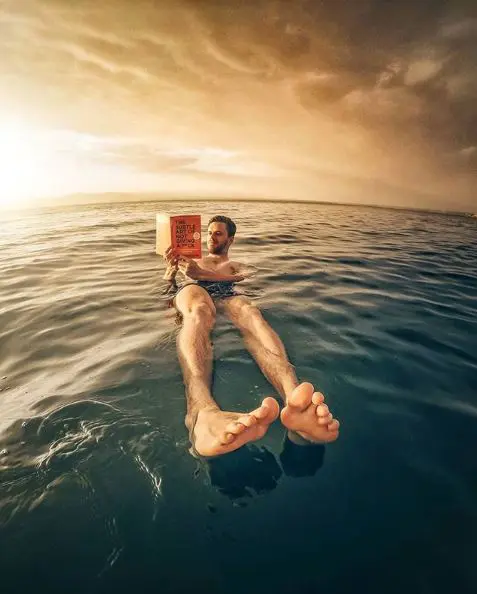
4. Swimming cautions in the Dead Sea
Swimming in the Dead Sea, renowned for its unparalleled buoyancy, presents a unique set of challenges and precautions that visitors should be mindful of. While the buoyant properties of the water make it nearly impossible for swimmers to sink, it’s essential to recognize that drowning remains a potential risk, particularly due to certain environmental factors and the hypersalinity of the water.
One of the significant hazards to be aware of is the influence of western winds, which can be unexpectedly strong and treacherous. These winds have tragically claimed lives, blowing unsuspecting swimmers off course and into deeper waters where they can struggle to stay afloat. Therefore, it’s crucial for visitors to exercise caution and remain vigilant, especially when venturing far from the shore.
Moreover, while the buoyancy of the Dead Sea is a remarkable phenomenon, it’s important not to underestimate the potential dangers of swallowing its intensely salty water. Ingesting even small amounts of this water can lead to discomfort, nausea, and in severe cases, respiratory distress. Therefore, swimmers are advised to avoid submerging their heads underwater and to take precautions to prevent accidental ingestion of the water.
For those planning a visit to the Dead Sea, choosing a beach with designated lifeguards on duty is highly recommended. These trained professionals are equipped to respond swiftly to emergencies and provide assistance as needed, enhancing the safety and security of swimmers and beachgoers alike.
In conclusion, while the Dead Sea offers a truly unique and unforgettable swimming experience, it’s essential to approach it with caution and respect for its inherent risks. By adhering to safety guidelines, remaining aware of environmental conditions, and taking necessary precautions, visitors can enjoy the beauty and wonder of this natural marvel while ensuring their well-being and that of others.
5. The Dead Sea has served multiple functions for centuries.
The Dead Sea, with its unique properties and rich history, has held a multifaceted significance for civilizations throughout the ages. Its allure extends far beyond its breathtaking scenery, as it has been revered for its abundance of resources and its therapeutic qualities.
One of the most intriguing aspects of the Dead Sea’s legacy is its role in ancient mummification practices. Dating back to antiquity, civilizations such as the Egyptians utilized the salt-rich mud and minerals from the Dead Sea in their embalming rituals. The preservative properties of the salt helped to desiccate and preserve the bodies of the deceased, ensuring their preservation for eternity. This aspect of the Dead Sea’s cultural heritage continues to fascinate archaeologists and historians to this day, shedding light on ancient beliefs and customs surrounding death and the afterlife.
Additionally, the Dead Sea has long been valued for its mineral-rich mud, which has been used for various purposes, including pottery and cosmetics. Ancient artisans recognized the exceptional quality of the clay found along the shores of the Dead Sea, using it to craft pottery and ceramics renowned for their durability and distinctive aesthetic appeal. Moreover, the mineral-rich mud and salts found in the Dead Sea have been prized for their therapeutic properties, believed to alleviate a variety of ailments and promote overall well-being.
In particular, the high concentration of salts and minerals in the Dead Sea water and mud has led to the development of a thriving industry centered around health and wellness. Modern-day visitors flock to the shores of the Dead Sea to partake in therapeutic treatments such as mud baths and salt scrubs, believed to offer relief from conditions such as psoriasis, eczema, and arthritis. The Dead Sea’s reputation as a natural spa destination continues to attract tourists from around the world, seeking rejuvenation and relaxation amidst its serene surroundings.
In conclusion, the Dead Sea’s significance spans centuries and encompasses a diverse range of cultural, economic, and therapeutic dimensions. Its role in ancient practices such as mummification and pottery-making, combined with its reputation as a source of healing and rejuvenation, underscores the enduring allure of this remarkable natural wonder. As a testament to its timeless appeal, the Dead Sea continues to captivate and inspire visitors, offering a glimpse into the rich tapestry of human history and the enduring power of nature’s bounty.
6. Did you know that the Dead Sea was the world’s first health resort?
Ancient civilisations found that the Dead Sea had healing properties fit for a King. Specifically, Herod the Great of the Roman Empire. Bathing in the mineral rich water and utilising its mud baths have been found to be a great solution for severe skin issues. Whilst you can find many spas on the harbour, the Dead Sea itself is nature’s spa and a free resource open to the public. There is no better place to experience therapeutic ambience than here.
7. You will be surprised to discover that the Dead Sea is actually dying.
Research has found that the Dead sea is quickly receding at an alarming rate. In the 1930s the dead sea measured at 410 square miles, today it measures only at 234 square miles and each year you will find the lake dropping by one metre. This is due to the water retracting into salt pockets beneath the shoreline.
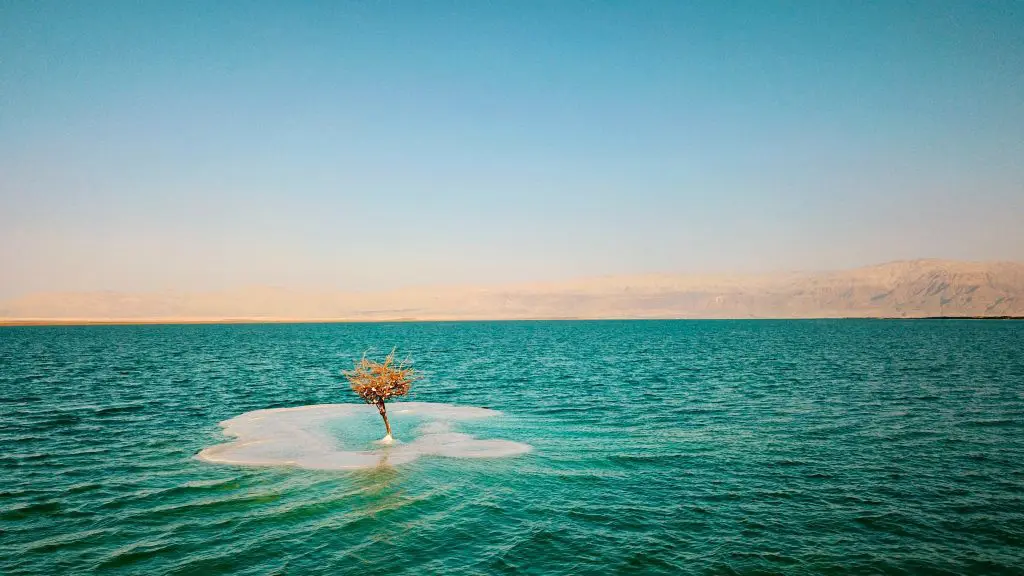
8. The Dead Sea is the lowest land-based elevation on earth.
In other words, this lake is the lowest point on Earth sitting at 427 metres below sea level. Driving into the Dead Sea area affords exceptional scenery as motorways sit high above sea level.
9. You won’t find any water sports happening here.
Whilst boats can easily float in the Dead Sea like a human body, the water’s buoyancy makes it impossible for boats to effectively move through the lake.
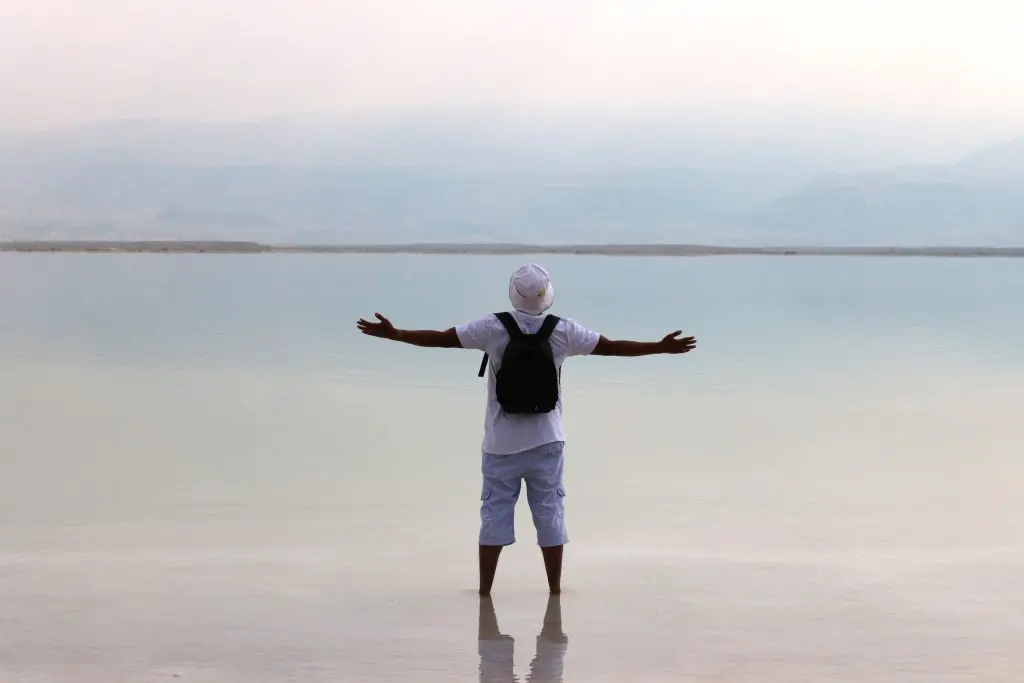
10. Maybe you have heard of the Dead Sea scrolls.
These scrolls were discovered in Qumran in the Dead Sea area during the 20th Century and contain the oldest copies of the Hebrew bible. They continue to be studied until this day and if you’re lucky you can catch a few pages in certain museums.
Keen to experience the Dead Sea for yourself? Check out our Jordan tours.
FAQs about Dead Sea
The Dead Sea earned its name due to the high salinity levels that prevent most forms of marine life from thriving in its waters. The extreme salinity makes it challenging for organisms to survive, hence the name “Dead” Sea.
Visiting the Dead Sea offers numerous potential benefits, including relaxation, rejuvenation, and relief from skin conditions such as psoriasis and eczema. The mineral-rich mud found along the shores of the Dead Sea is also used in spa treatments for its purported therapeutic properties.
While the Dead Sea is a popular tourist destination, visitors should be aware of potential dangers, such as the risk of dehydration due to the hot climate and high salt content of the water. Additionally, swimmers should exercise caution to avoid getting water in their eyes or swallowing it, as this can cause irritation or discomfort.
At the Dead Sea, visitors can enjoy a variety of activities, including swimming, floating effortlessly on the water’s surface, and applying mineral-rich mud for skin treatments. Many resorts and spas along the shores of the Dead Sea offer additional amenities such as massages, facials, and salt scrubs.
Generally, it is safe to visit the Dead Sea, but visitors should be mindful of their health and safety, particularly regarding hydration and sun protection due to the region’s hot and arid climate. Additionally, it’s essential to follow any guidelines or warnings provided by local authorities regarding swimming conditions and water safety.
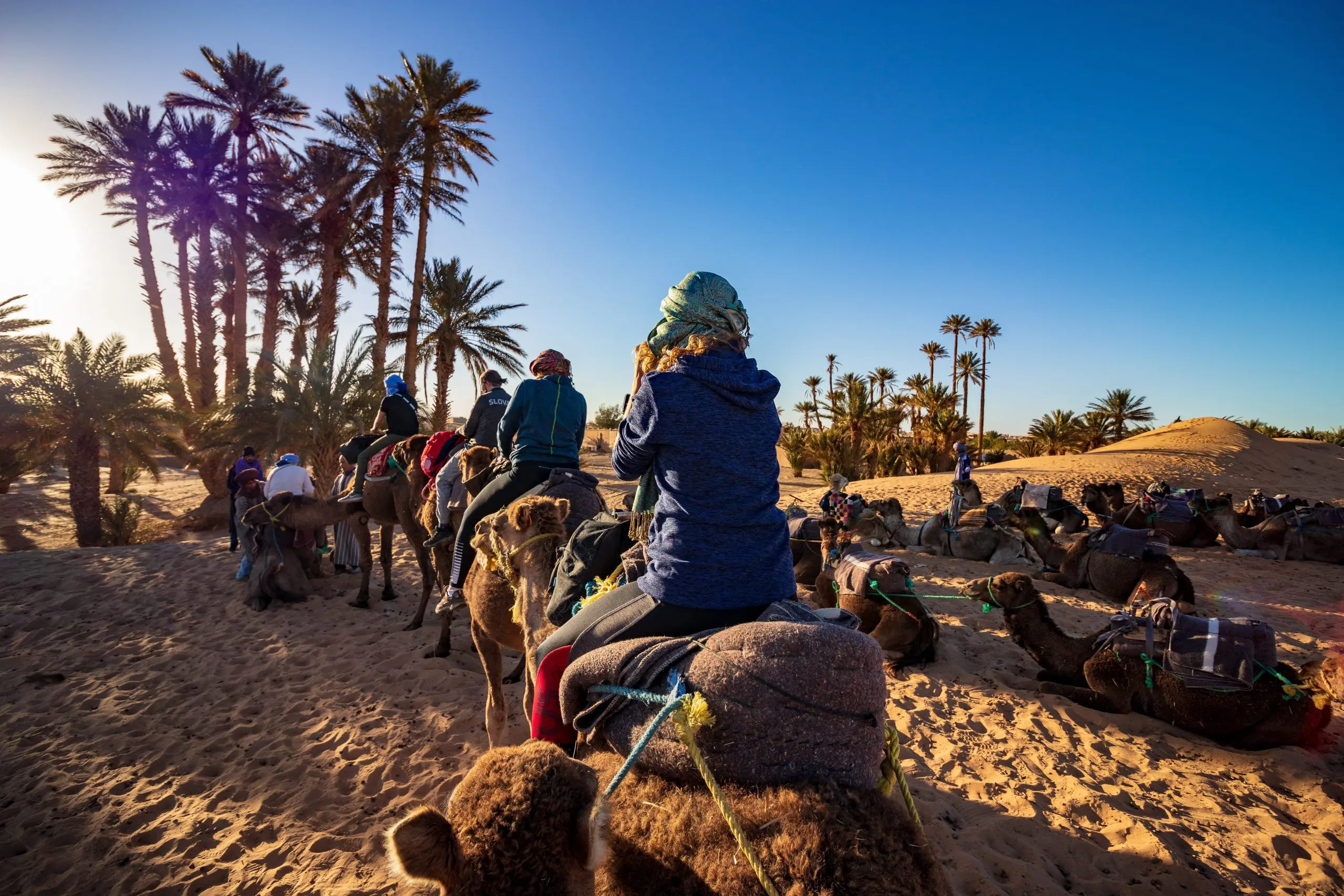 December Sale; Save 50%
December Sale; Save 50%  Croatia Sailing : Save 50%
Croatia Sailing : Save 50% Asia Tours : 50% Off
Asia Tours : 50% Off Central & Eastern Europe Tours: 50% Off
Central & Eastern Europe Tours: 50% Off  Why Travel Talk
Why Travel Talk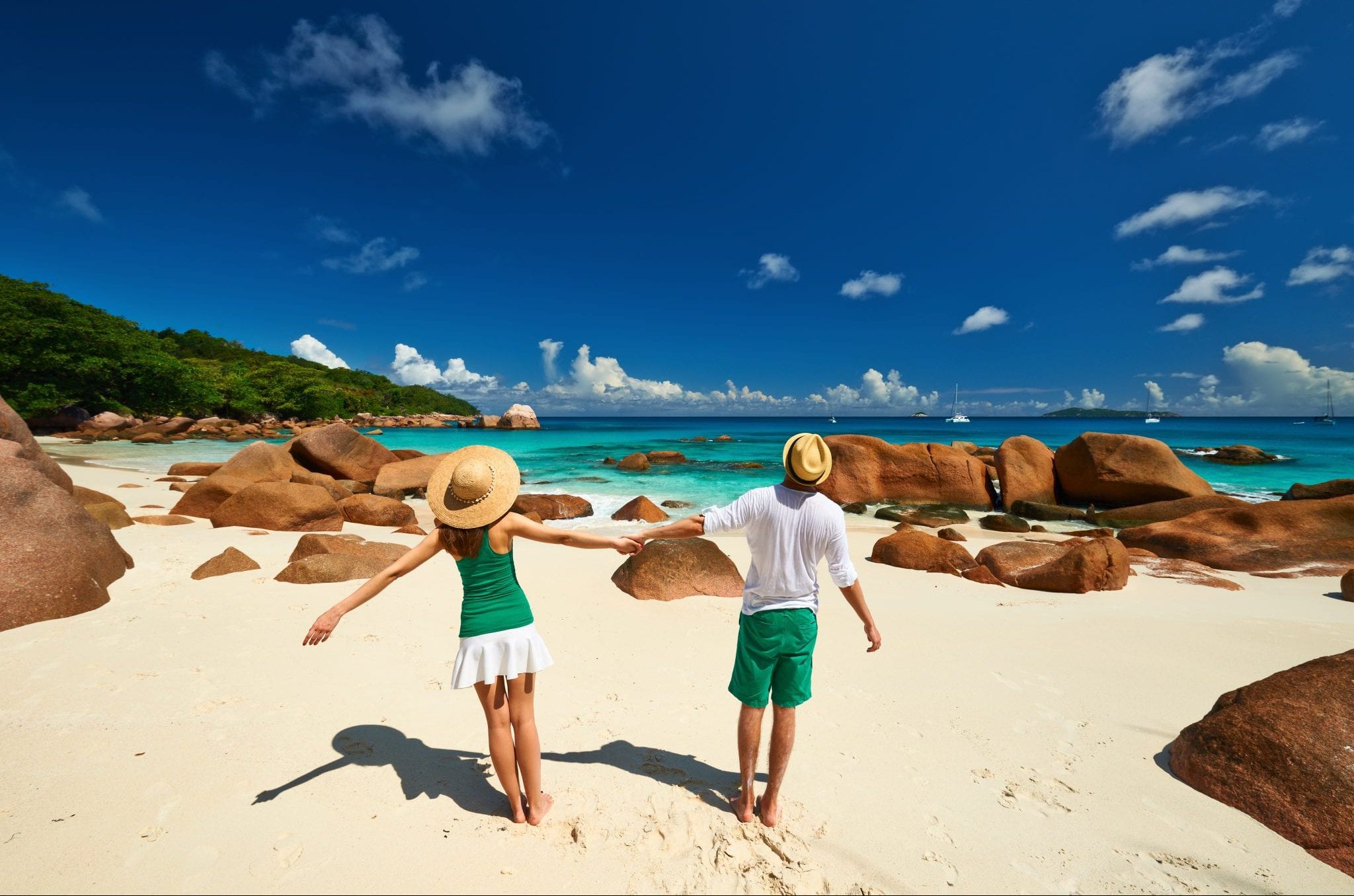 Travel Talk Blog
Travel Talk Blog Responsible Travel
Responsible Travel Fair Travels with Travel Talk
Fair Travels with Travel Talk